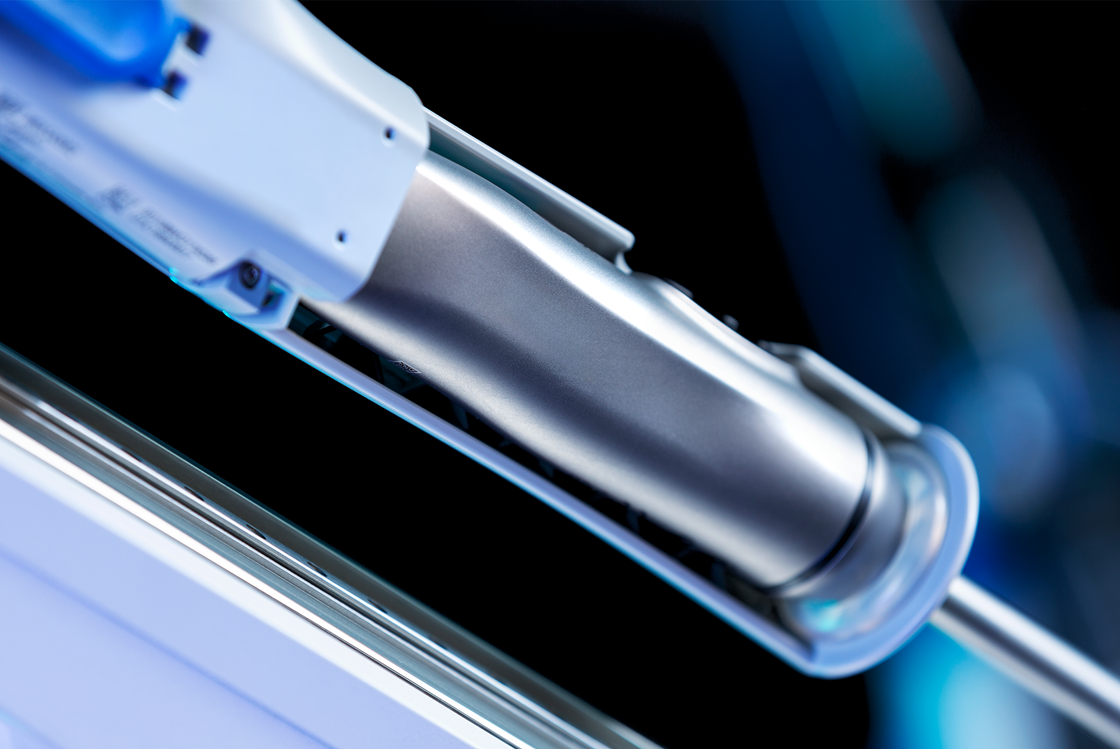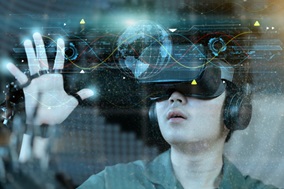Robots see the future of surgery [and it’s super cool]
How cameras, sensors, and AI help surgeons navigate inside the human body — and what that could look like for the future of patient care
As an undergraduate student, Dan Stoyanov got interested in computer vision systems while working on a project to see how a local transportation authority could use its surveillance system to count passengers at a busy London train station.
His mission? Analyze the images taken by the authority’s cameras to come up with a way to ease congestion.
“And then I was fortunate to meet a professor at Imperial College London who said, ‘Well, why don't we do this in surgery?’ Stoyanov said. “At the time, the first surgical robots were beginning to be used in clinical practice. While I had never thought about it before, it sounded exciting.”
Today, Stoyanov is a renowned expert in robot vision systems and known for his pioneering work using AI to capture and analyze surgical images. He is a professor at the Royal College of London where he leads the Robot Vision Scientific Research Group.

He is also one of the top AI experts at Medtronic who is leading the development of the Touch Surgery™ Ecosystem, which includes the first ever AI-powered surgical video and data analytics platform for the operating room.
“The power to capture surgical images, analyze them, and learn from what you see is how surgeons improve their craft,” Stoyanov said. “When that happens, we can improve the practice of medicine and create better experiences for patients.”
Lights, camera, robot vision!
Humans see the world through their own eyes and process those images in the brain. Robots, on the other hand, “see” the world in pixels of images captured by state-of-the-art cameras.

Vision is a critically important function for all machines including computers and robots. Without a vision system, robots wouldn’t be able to perform basic tasks such as picking up objects.
“Robot vision is the ability that enables robots to see similarly to the way that we see,” Stoyanov said. “We use vision as one of the primary senses to navigate the world — to make decisions to perform actions. If you think of the robot as the mechanical piece of the system, robot vision is the cognitive piece, using visual sensors to enable the robot to navigate, make decisions, and perform actions.”
The hardware behind a robotic vision system typically consists of state-of-the-art cameras, sensors, and computers. Today, cameras are smaller, digital, and more responsive to light. As a result, there’s been a revolution in resolution. Images have gotten brighter and sharper.
Camera technology has also evolved to detect other frequencies of light on the electromagnetic spectrum.
“With some surgical cameras, you might be able to detect light that is being emitted in a spectrum that is not normally visible to the human eye,” he said. “In fact, we are going beyond what humans can see, and into a world where vision systems can detect really important information that is incredibly valuable to a surgeon.”
AI prompts a paradigm shift
Combining vision systems with AI transforms the way robots process visual information, giving them the power to recognize images and learn from their experiences.
Today, AI-assisted surgical robots are operated by specially trained surgeons. But could vision systems become so advanced that an AI-assisted surgical robot could operate autonomously in the future? Stoyanov says it’s a good question. Some surgical procedures could be automated in the future with more advancements in technology, he said.
The better question, he said, is, “What kind of value could this technology deliver?”
“Is it increasing the number of patients that we can treat? Is it reducing the cost of care? Is it enabling care in places where it's not available, which I think is exciting. These are the questions that need to be asked — so that we’re solving real challenges in surgery for patients around the world. And that’s exactly what we’re focused on at Medtronic.”
The Medtronic Hugo™ RAS system is commercially available in certain geographies. Regulatory requirements of individual countries and regions will determine approval, clearance, or market availability. In the EU, the Hugo™ RAS system is CE marked. In the U.S., the Hugo™ system is an investigational device not for sale. Touch Surgery™ Enterprise is not intended to direct surgery, or aid in diagnosis or treatment of a disease or condition.
L00102292024
Related content



